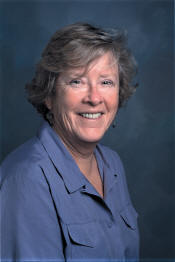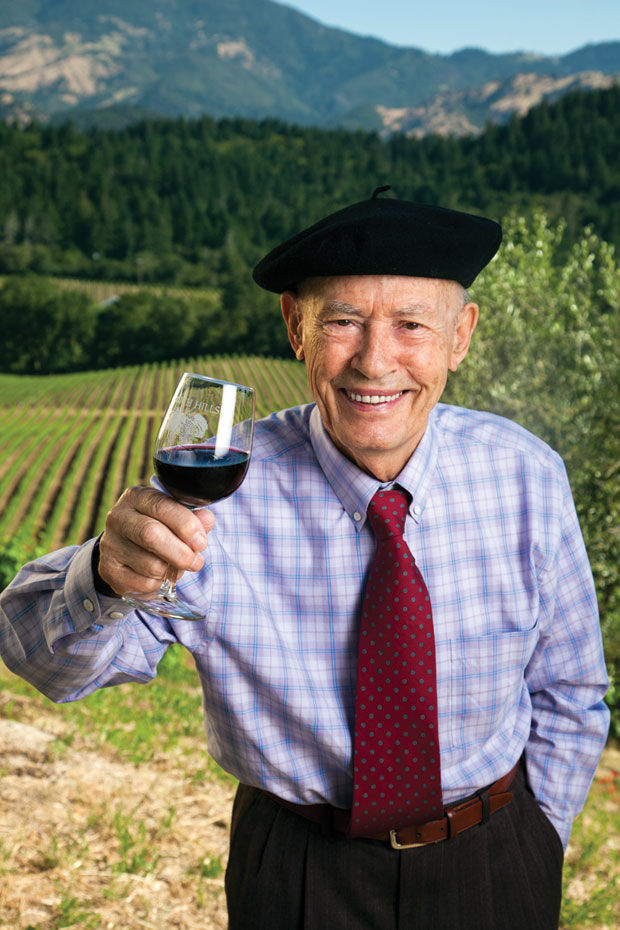Oregon has a cool climate and typically moist due to the Pacific Ocean and Cascade Mountains. Oregon is one of the top 4 producing states. Although it is considered the 4th in the producing states, it actually ranks second in terms of the number of the wineries in the operation behind only to California. Today Oregon is considered one of the most important wine making areas of the United States and is easily the best cool climate region. Oregon offer grapes such as Pinot Gris, Chardonnay, and Riesling, and Pinot Gris being the top white grape variety. Their top region being Willamette Valley, flowing north toward the Columbia river and the city of Portland, the Willamette river slowly cuts through the valley named for it. The Willamette Valley AVA is the larges and most famous appellation in Oregon. Most premium wine production takes place in the northwest portion of the valley. The mostly volcanic soils of the Willamette Valley AVA are home to the majority of the state’s producer, many of which are only tiny operations that make limited amounts of wine. The northwestern part of the Willamette Valley AVA is also home to six additional sub-regions with AVA status. These are typically areas noted for superior quality and wines with distinct characteristics. Below is an article regarding a very important figure who produced the first wine in Oregon in 1858:
In the beginning there was Peter Britt
Most people with a passing interest in the evolution of the wine industry in Oregon know that it all started with the man who gave his name to Jacksonville Oregon’s Britt Festival and that the slope where festival patrons picnic and party down was the site of the vineyard where he grew table grapes.
Wait a minute—table grapes?
Relax. He also had fifteen acres of vitus vinifera at a site northeast of town. It was from these grapes that he produced the state’s first wine in 1858, making one to three thousand gallons a year, which he sold for fifty cents a gallon. Britt’s success spawned an industry that by 1890 supported over a dozen winemakers in and around Jacksonville. Britt’s success also got him noticed by the Internal Revenue Service. In 1873 the IRS issued a bill for back taxes on wine sold. Britt settled the issue, getting a business license in the course of events. He named his vineyard Valley View. Wine produced under that label was still being sold a couple of years after Britt’s death in 1905.
And then Prohibition was enacted. In Oregon temperance leagues had been actively campaigning to outlaw alcohol since 1836. Finally in 1914 their efforts resulted in the Oregon Enforcement Act which banned manufacture and sale of liquor, as well as accepting orders for liquor, printing ads for liquor, and giving away liquor. Doctors were permitted to prescribe and drugstores to carry it for sale by prescription. Individuals were allowed to bring up to five gallons of wine and spirits and up to twenty gallons of beer per month into the state. The Enforcement Act took effect in 1916, four years before the rest of the country went dry.
Prohibition was repealed in 1933, but by that time Oregon’s wine industry was long gone, vineyards having been replaced by orchards. Interest in wine grape growing did not revive in the Rogue Valley until 1967 when horticulturalist Porter Lombard planted an experimental vineyard at the OSU Southern Oregon Experiment Station in Central Point. Lombard, acknowledged as the father of the modern Rogue Valley wine industry, not only demonstrated that wine varietals would flourish here, but also provided grape vine cuttings and consultations to local farmers willing to try viticulture.
Following experimentation came education. Dick Troon proposed a course on viticulture which was offered by Rogue Community College in 1972. After attending the course, Frank Wisnovsky, Roger and Barrie Layne and Troon put in the earliest modern vineyards in the Applegate Valley. Dunbar Carpenter and John Ousterhout followed suit near Medford as did Ted Gerber and Suzi and Chuck David in the Illinois Valley.
Peter Britt Home
The first modern winery in the Rogue Valley, bonded in 1978, was Frank Wisnovsky’s Valley View Winery in Ruch, named as an homage to Britt’s earlier operation in Jacksonville. Chuck and Suzi David’s Siskiyou Vineyards Winery was established in the Illinois Valley near Cave Junction later the same year. Bridgeview and Foris wineries opened in the Illinois Valley in 1986 followed two years later by Ashland Vineyards and Weisinger’s Winery in the Bear Creek Valley.
In recognition of its distinct soils, climate and topography, elements that give wines their unique terroir, the Rogue Valley was recognized as a distinct American Viticultural Area (AVA) in 1991. The Rogue Valley AVA lies just north of the California border entirely within Jackson and Josephine Counties. The Applegate Valley was recognized in 2000 as a distinct AVA within the Rogue Valley AVA.
By 1997 there were 51 vineyards and 10 wineries operating in the Rogue Valley. That same year climatologist Gregory V. Jones began work at Ashland’s Southern Oregon University. Jones had an immediate and profound influence on Rogue Valley viticulture. His earlier studies in Bordeaux, France led him to conclude that warm weather varietals would do better than Burgundian and Alsatian grapes in certain parts of the region. Increasingly growers came to rely on advice from experts such as Jones in tailoring their selection of grape varietals to very specific site conditions. Thus, an east facing slope near Emigrant Creek in Ashland allows for cultivation of superb Pinot Noir, whereas a south facing slope only a couple of miles away near Pompadour Bluff provides warmer exposure suited to production of excellent Malbec. Jones is not only an invaluable resource for Rogue Valley growers but has established a world-wide reputation for his application of climate studies to viticulture. His studies have been used to define wine regions all over the globe. No wonder he appeared on Decanter Magazine’s 2009 Power List as one of the fifty most influential people in the world wine industry.
But given that today 120 Rogue Valley vineyards—according to the latest Oregon Vineyard Report (2011)—produce over two dozen different varietals, the question is whether that diversity is a blessing or a curse. Some industry professionals feel that the reputation of the Rogue Valley would be enhanced if it were recognized for only one grape, as is the Willamette for Pinot Noir. Others— to wit, the organizers of the World of Wine celebration— favor the situation as it has evolved, such that wine tourists can find anything from Rhone varietals and Tempranillo to Riesling and Pinot with a full range of Bordeaux in between. For those who favor minimal government intervention in the day-to-day affairs of citizens, note that if this were France the designation of the viticultural area (appellation contrôlée) would come with strict limitations on the type of grapes to be grown.
It may be better to work on burnishing the image of the Rogue Valley by taking an ever more critical look at not the what but the how. As long as the Tempranillo measures up to Red Lily, the Viognier to William Augustus and the Pinot Noir to Irvine—all brands that have become benchmarks for the region—then we can’t go wrong.
M J Daspit
Which brings us to the subject of winemaking as opposed to grape growing. Just as viticultural practice has become more and more specialized— even to the extent that a grower can select a certain clone of a varietal to be grafted onto a root stock specifically suited to thrive in a particular soil—making wine has become as much a science as an art. The self-taught winemaker is a vanishing specimen among today’s Rogue Valley vintners. More typical are UC Davis grads with experience in large-scale California wineries. It’s also not unusual to find Rogue Valley winemakers such as Eric Weisinger who has expanded his expertise by making wine in New Zealand and other southern hemisphere sites, managing two harvests per year. Another new breed of cat is winemaker Linda Donovan whose Pallet Wine Company in Medford is the Rogue Valley’s first and only exclusively custom crush facility. After fifteen years’ experience in international winemaking, Donovan established Pallet in 2009 to provide full-service winemaking, storage, laboratory, and support services to growers and wineries throughout the Rogue Valley. In 2011 Pallet processed 427 tons of grapes. To give you some idea of Donovan’s market share, in 2010 (the last year this statistic is available) a total of 2,519 tons of grapes were crushed by all wineries in the Rogue Valley. As of this year, Donovan reported that Pallet has three dozen clients and will make over thirty varietals.
There are two other regional trends well worth mentioning. The first has to do with growth. Over the past two years five new wineries with estate vineyards over fifteen acres (established or in process) have emerged on the scene. With this economy of scale, we can expect the local wines to come at a more reasonable price and the wineries to maintain greater financial stability.
The second trend is toward tasting rooms with panache, venues that will put the Rogue Valley on every wine aficionado’s must see list. Folin Cellars was one of the first of a new generation of wineries/tasting rooms to demonstrate that modern functionality need not come at the price of opulence. Similarly, the Red Lily winery and tasting room on the banks of the Applegate River provides a unique combination of natural beauty with an informal, but upscale tasting experience. The jewel in the crown is Jacksonville’s DANCIN, tucked into a hillside like a Tuscan retreat with unparalleled elegance and hospitality together with exquisite Chardonnay and Pinot Noir. On the horizon is Kriselle Cellars tasting room, expected to open this year around Labor Day. Judging from the plans visible on the website and from the wines now available in restaurants, it promises to add to the growing reputation of Rogue Valley wine venues.
It’s incredibly exciting in a nearly invisible kind of way. I mean to say, these are not trends that make The Wall Street Journal on a regular basis, though they have a profound impact on our local economy. Still, for those in the know there are ways to keep current with the explosion of excellent vintages in our valley. This year’s Southern Oregon World of Wine celebration—dubbed WOW for good reason—promises to be bigger and better than ever, featuring more Rogue Valley wines at one venue than you’ll find anywhere else. Centrally located in Jacksonville, the annual event features an unprecedented opportunity for wine lovers to meet winemakers and taste their vintages. Classes offered run the gamut from sensory evaluation of wines to viticultural climates to, yes, the history of winemaking in our valley. I’m happy to say I’ll be there to discuss my research and to offer signed copies of my book Rogue Valley Wine for those who want to retain their wine experience beyond the day.
Rogue Valley Wine (Arcadia Publishing, 2011) is also available at most winery tasting rooms along with the 2013 Rogue Valley Vineyards & Wineries Desk Calendar, which provides full color photos and information on wineries that have emerged since publication of the book.
Editor’s Note: Wine lovers save the date – the World of Wine Festival returns to Jacksonville August 22-25. Featuring 60 Southern Oregon wineries and 100+ wines, the event includes daily sensory clinics, a Gold Rush Dinner and the Grand Tasting on the Bigham Knoll Campus under the BIG TENT. See page 33 for details and information on getting tickets to this not-to-be-missed event!
“http://jacksonvillereview.com/in-the-beginning-there-was-peter-britt-by-m-j-daspit/”
Gibson, Michael. The Sommelier Prep Course: An Introduction to the Wines, Beers, and Spirits of the World. 2010.









